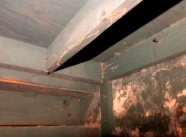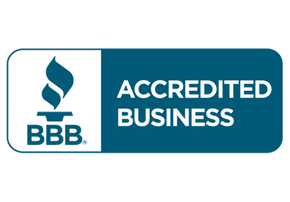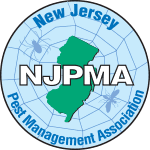TERMITE CONTROL
(WE PERFORM REAL ESTATE INSPECTIONS)
A really big concern most homeowners have are termites, there is no doubt why; since it has been stated that termites may cause $30 billion worth of damage in crops and man-made structures each year in the U.S. alone. Besides, you may never see evidence of them until a pest professional finds out they have seriously damaged your home.
Not sure if you have a termite problem? Or maybe you want to learn more about how termite control works. Check out the following information to clarify some questions you may have.
Termites Library Shortcuts
- What Are Termites?
- How To Identify Termites Or Flying Ants?
- What Causes Termite Infestations?
- How To Identify A Termite Infestation?
- What May Termites In Or Around Your Property Cause?
- Tips For Property Owners
- Structural Repair Estimate
- What Will We Do?


WHAT ARE TERMITES?
Termites are insects that usually measure between 1/4 and 1/2 of an inch long and have soft bodies with straight antennae. They mostly feed on dead plant matter like woodchip, decayed wood, leaf litter and soil. This pest is considered to be one of the most destructive in the world due to their ability to consume wood where they ingest wood cellulose.
There are three different types of termites:
- Damp wood, they generally live in heavily forested areas
- Dry wood, they live in extremely dry wood and are rarely found in the US
- Subterranean, as their name suggests they live underground, these are the termites of concern in our area
Termites are social insects, which means they work together and share tasks within the colony. A termite colony is like a vast, dynamic city with a sophisticated caste system and it can contain millions of termites. Here is how the castes organization works:
- King and queen, the pair of reproductive termites that establishes a new colony
- Workers, the largest caste that build, repair, forage for food and care for other termites
- Nymphs, newly hatched termites that have not yet assumed a colony, they can molt into different castes
- Soldiers, fully mature termites that protect the colony
- Winged reproductives, flying termites that can leave the colony to start new colonies
HOW TO IDENTIFY TERMITES OR FLYING ANTS?


Termites are often mistaken for flying ants, but there are some noticeable differences to help you identify them:
- Termite wings tend to be equal in size while ant wings are usually longer in front and shorter in back
- Ants’ antennae are elbowed while termites are straight
- Ants have a narrow, pinched waist, while termites’ waists are thicker and less defined.
- Termites lose their wings readily, shedding them onto the ground, whereas the wings on ants typically remain attached to the insect’s body
WHAT CAUSES TERMITE INFESTATIONS?
Termites are a common occurrence in nature and can cause severe damage to both the aesthetics and structure of your home or business because they are constantly in search of additional sources of food. Termites constantly forage and evaluate the size and quality of food resources as they seek out cellulose, which are usually found in fallen trees, decaying wood, plant debris, etc.
It is in this search for food that termites can find the following conditions that may cause a termite infestation in your property:
- Moisture, subterranean termites are attracted to moisture. Standing water in or around your home’s foundation creates an attractive environment for them.
- Wood and wooden structures that come into contact with your home, wood that serves as a bridge between the ground and your home may create a point of entry for termites.
- Openings in your home, termites may take advantage of any breach in your home’s integrity in order to find moisture and food. Even cracks in your foundation’s concrete offer opportunities for subterranean termites to gather materials for the construction of their mud tubes, the tunnels by which they travel in their foraging.
HOW TO IDENTIFY A TERMITE INFESTATION?
Unfortunately, termites can be in your home for several years with very few signs of activity, causing damage to wooden structures. But the following are some signs you can look for:
- Termite swarming or discarded wings during the day and often after rainfall
- Mud tubes in or around windows and doorframes
- Wood, baseboards and floors that sound hollow when tapped
- Buckling wooden or laminate floor boards
- Dead termites or termite wings on window sills or along walls
- Uneven or bubbling paint
WHAT MAY TERMITES IN OR AROUND YOUR PROPERTY CAUSE?
As mentioned before, termites can cause $30 billion worth damage annually. Many buildings are hold together with wood through a system of framing components, which is why damage to any of these pieces can weaken the rest of components; beams, posts and supports. This damage is caused once termites access your property in their search for food. They then dig a space for a nest and form a seal that keeps them inside the space. At this point, termites begin laying eggs to start their colony.
Even though termite damage is gradual, over two years may be enough for the colony to get big and cause serious, costly and permanent damage, requiring property owners to replace or repair large sections of framing or wooden structures. In addition:
- Most homeowners policies do not cover termite damage
- Termite damage is usually in hidden areas, behind walls, in crawl spaces and basements
- Termites can go unnoticed for years while continuing to damage your property
Termite damage can cause a significant drop on the market value of your home. However, if the termite infestation is caught soon enough, the building’s long-term value can be saved.

TIPS FOR PROPERTY OWNERS
Getting rid of termites requires a conventional chemical treatment or the use of baits; although, we have listed some tips to make a house less ideal for termite invasions.
- Correct moisture problems and avoid having standing water around your house; which involves keeping landscape a few feet from foundation, clearing crawl spaces of debris and water and repairing any leaking pipes in basements.
- Remove vines, mulch, stumps or any other exterior wood that is in close proximity to your home’s foundation. Roofs can also be infested by termites, therefore, trim back any tree limbs that are resting on your roof or touching wooden structures.
- Inspect your home entry doors and windows periodically, look for any loose or defective seals where electrical conduit or plumbing lines enter your home. Fixing these minor details can help you prevent termite infestations.
WHAT WILL WE DO?
At E&G Pest Solutions, we offer both extermination and preventive services to assist in the early detection and elimination of termites in your property.
Our termite control process typically consists of the following stages:
- Inspect your property to determine if, where and how termites are getting in.
- Offer pest control programs to get the termite problem under control
- Treat the existing termite infestation and/or prevent future infestations
After the inspection we will determine which treatment will work for your particular situation. If the inspection reveals termites, we will get rid of them with a traditional liquid termite treatment, as follows:
- Our technician will trench and rod the ground around the exterior of your property, and also drill through concrete that is against the home.
- He will apply the chemical, which will be distributed in the ground. This traditional treatment kills termites in several ways since it is undetectable for them, they cannot see, smell, taste or avoid it.
- When a termite eats or contacts any treated material, it will die. Also, infected termites will transfer the chemical to other termites they contact before dying, spreading it like a virus throughout the colony.
- After the colony is eliminated we recommend our Advance Termite Bait System to prevent future infestations.
If the inspection reveals no termites we would recommend our Advance Termite Bait System program to provide on-going protection against new colonies, as follows:

- The Advance Termite Bait System will be installed in soil around the perimeter of your home
- The stations will be checked regularly for termite activity to prevent infestations
- When termites are found in a station, the Termite Inspection Cartridge, containing no active ingredient, will be replaced with a Termite Bait Cartridge so termites can start feeding on the bait. (We can also do the traditional liquid treatment if needed).
- As termites feed and then travel back to the colony, they share termite bait with other nest mates. As feeding on the bait continues more and more termites are affected and the colony starts dying.
- Once the colony is eliminated, the bait is replaced with new monitoring cartridges and we will continue with the regular inspections.
STRUCTURAL REPAIR ESTIMATE

A technician would do an inspection of visual areas and provide an estimate to repair damage present. Sometimes there can be hidden damage and a small section of wall can be opened to view wall studs etc. and provide an estimate for any additional repairs if needed.
Please call E&G Pest Solutions for a FREE inspection and estimate 1-800-564-6368
Want a Free Estimate?
Need to Schedule Service?
Have a Questions?
WHY CHOOSE E&G PEST SOLUTIONS?
- All of our services are guaranteed. We deliver what we promise or your money back,
- We were chosen business leader of the year in Middlesex County, member of Home Advisor and Angie’sList.
- We offer unique and effective pest solutions
- We are environmentally conscious
- We provide termite inspection reports for real estate transactions
What our clients are saying
Our Partners and Awards
Service Areas
New Jersey:
Ocean County
Essex County
Passaic County
Morris County
Hudson County
Bergen County









